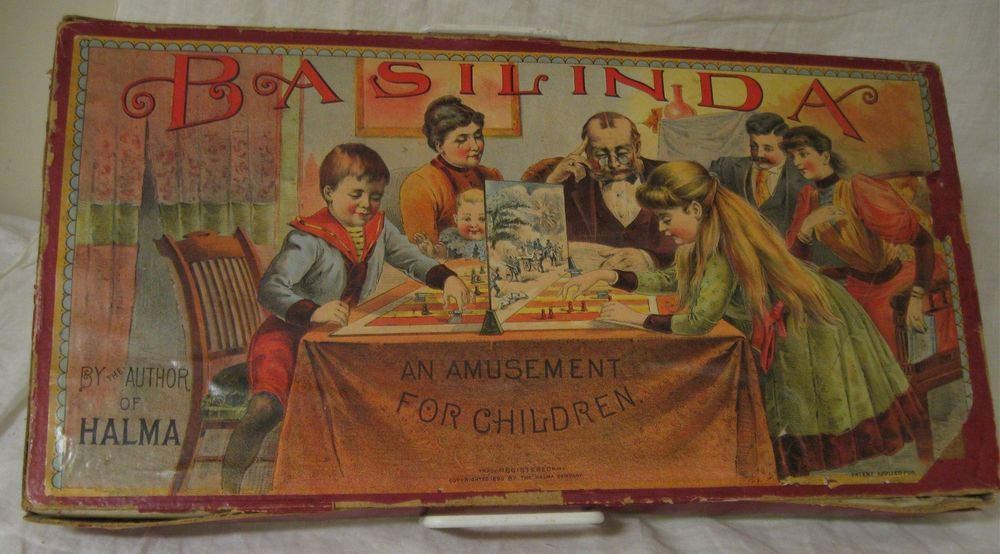Basilinda (1890)
Basilinda
Basilinda is a board game created by George Howard Monks, the author of Halma, and was first published and manufactured in 1890 by E.I. Horsman, a toy manufacturer from New York. The game originally sold for $1.00 when it was released. Basilinda resembles classic Chinese checkers with the addition of “cannon” and “ca” pieces.
Why is Basilinda Popular?
Basilinda is a popular game because it involves strategy and tactics, and it is easy to learn and play. The game has been linked to the classic board game Halma, which was invented by George Howard Monks between 1883 and 1884. After the success of Halma, Monks created Basilinda, which shares similarities with Chinese Checkers but has unique features such as “captain” and “cannon” pieces.
Game Components of Basilinda
How To Setup Basilinda
To set up Basilinda, players start by placing their 18 men, 3 cannons, and 1 captain or king on their side of the board. The movable partition is positioned to hide the opposing player’s pieces from view. This setup ensures that players do not see the initial placement of their opponent’s forces, adding a strategic layer to the game.
Gameplay Mechanics and Game Objective
Player Experience
Playing Basilinda combines strategic planning with a hint of luck, as the hidden initial setup adds an element of surprise. Players need to think ahead and use their pieces wisely to outmaneuver their opponents. The game requires a balance between defensive and offensive strategies, making it engaging and challenging.
Pros
Cons
Personal Thoughts on Basilinda
Basilinda is a game that will appeal to fans of strategic board games and those who enjoy a mix of luck and planning. It is ideal for players looking for a game that is both challenging and engaging, with a historical twist. However, due to its complexity and rarity, it may not be the best choice for casual or new board game enthusiasts.
We are supported by our audience. When you purchase through links on our site, we may earn an affiliate commission, at no extra cost for you. Learn more.

